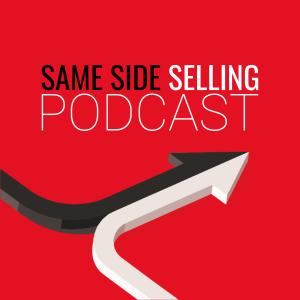
Some of the latest developments in business tech you might not have heard of are competitive intelligence and predictive campaigning. Competitive intelligence keeps tabs on what the industry is saying about your company, what your competition is doing as well as your prospective and existing customers.
Predictive campaigns are the latest evolution in marketing: they provide key information about customers based on thousands of data points, and show you why certain customers work with you and uncover others like them already in your database!
On this episode of Grow My Revenue I have two key leaders in this area join me to talk about both of these topics and how they are shaping the future of sales and marketing.
Listen to this episode and discover:
- What is crowdsourcing, according to Jim?
- How do you know if you are paying enough attention to your competitors?
- What you should be looking for in competitive intellingence, and probably aren't.
- 97% of all so-called leads never result in a sale: true or false?
- What does predictive analytics actually do?
- And so much more…
Episode Overview
On this episode Jim shares how Owler helps people spend less time gathering information on their competition and their own company's place in the market, and how Owler has turned competitive intelligence into a democracy for everyone. In the past only large companies could afford competitive analysis but with the advent of Owler and similar companies everyone can receive competitive intelligence data.
Also on this episode is John Bara, a 25-year veteran of Silicon Valley who works with some of the fastest growth companies there. He is the President and Chief Founder of Mintigo. Today he explains what predictive campaigns are, and how they are at the forefront of the latest in the evolution of marketing.
Predictive campaigns are the latest way for marketers to gather customer and prospect data. They are based on predictive analytics, predictive fit and intent data. Predictive analytics creates a broader profile of a person, Mintigo calls this the customer DNA.
An example of this is let's say you're a tech company and you're selling software. What you know about your customers is fairly light: you know their name, title, email and and what they've bought from you, how much they paid and how long ago they bought. That's not a lot of data and it doesn't go very deep into the person.
Predictive analytics would gather thousands of data points about that person and add to their profile, to help give you get a pattern of who they really are. Some examples would be: the job title of who they are hiring, what types of tech are they using, what certifications do they have (legal, regulatory, tech). You'd also find out how much they are spending on Google ads and other PPC ads, and what are their geographic trends. You have a broader, richer look at your customer.
Predictive fit helps you understand those thousands of data points to find out why you are doing well with certain types of customers, and who else in your database fits that mold. It also helps you understand how to have a sales conversation with that prospect.
John goes on to explain what intent data is, how it's useful as well as hi best piece of advice for marketers on this episode of Grow My Revenue. On this episode both John and Jim provide valuable revelations about the latest technology in sales and marketing, and how it can help you grow your revenue.
Discover more at http://www.growmyrevenue.com/podcast/competition/
view more
More Episodes
3 Most Common Traps In Pipeline Reviews
 2023-07-05
2023-07-05
 2023-07-05
2023-07-05
Biggest Cold Outreach Mistakes
 2023-06-07
2023-06-07
 2023-06-07
2023-06-07
3 Worst Things Taught To Sellers
 2023-05-24
2023-05-24
 2023-05-24
2023-05-24
How To Cut Your Sales Cycle In Half
 2023-05-17
2023-05-17
 2023-05-17
2023-05-17
Stop Showing Up To Sell, Show Up To Solve
 2023-04-26
2023-04-26
 2023-04-26
2023-04-26
Biggest Mistakes in Sales Kickoff Meetings
 2023-04-12
2023-04-12
 2023-04-12
2023-04-12
Why Cold Outreach Efforts Fail
 2023-04-05
2023-04-05
 2023-04-05
2023-04-05
Why Customers Stick With Existing Vendors
 2023-03-29
2023-03-29
 2023-03-29
2023-03-29
Why Clients Focus On Price
 2023-03-22
2023-03-22
 2023-03-22
2023-03-22
012345678910111213141516171819
Create your
podcast in
minutes
- Full-featured podcast site
- Unlimited storage and bandwidth
- Comprehensive podcast stats
- Distribute to Apple Podcasts, Spotify, and more
- Make money with your podcast
It is Free
- Privacy Policy
- Cookie Policy
- Terms of Use
- Consent Preferences
- Copyright © 2015-2024 Podbean.com






